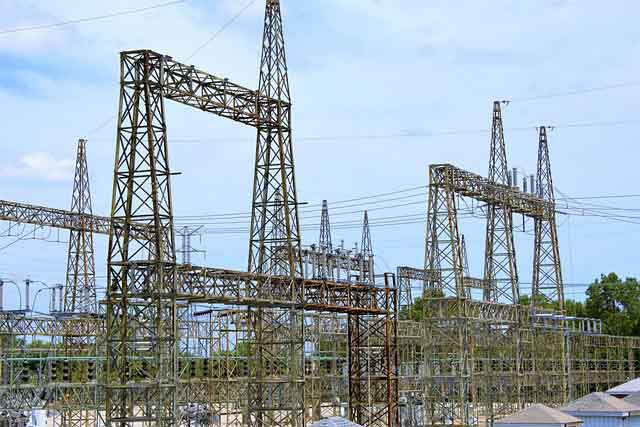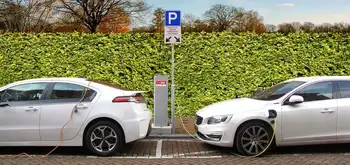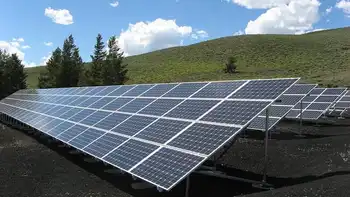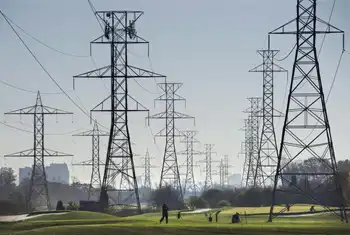Power showdown looms over new utility lines
By Investor's Business Daily
Protective Relay Training - Basic
Our customized live online or in‑person group training can be delivered to your staff at your location.

- Live Online
- 12 hours Instructor-led
- Group Training Available
With the government already spending nearly $800 billion on an economic stimulus plan passed last February and talk of more cash possibly coming in a new package, a few billion dollars to overhaul the nation's creaky power grid might not sound like much of a stretch.
But many obstacles stand in the way, ranging from the powerful "not-in-my-back-yard" syndrome at the local level to complications posed by regional power line and alternative energy efforts already under way around the country.
Wind power advocates argue new transmission lines are essential to meet a goal of 300 gigawatts of wind power by 2030 — enough for 20% of the U.S.'s power needs.
Politicians from President Barack Obama on down have won votes pitching cleaner energy and green collar jobs as part of a global march toward a smaller carbon footprint. That overall push landed in the Senate this week as debate opened on whether proposed cap and trade legislation would help the economy or hurt it.
As the White House and Wall Street face the worse financial upheaval since the Great Depression, talk has risen of public works projects to mimic the massive job creation of the New Deal era of the 1930s and '40s.
Breaching the thorny topic of a new national power lines network, the chief of the Federal Energy Regulatory Commission argued recently in Congress that Washington could follow the example of the 65-year-old Natural Gas Act, which helped build up the country's infrastructure to carry gas for power generation and heat.
"If the nation is to meet its (power transmission) goals, there must be a mechanism that, after the states have had an opportunity, allows a transmission developer to invoke federal authority to site the transmission facilities necessary to interconnect renewable power to the electric transmission grid and move that power to consumers," FERC Chairman Jon Wellinghoff said at the "Future of the Grid" panel held by the House Committee on Energy and Commerce.
His view met resistance from Massachusetts public utilities chairman Paul Hibbard.
"The expansion of FERC authority into centralized resource planning and associated siting jurisdiction violates fundamental free market principles," Hibbard said.
Greater FERC eminent domain power would, "diminish or eliminate the proven benefits of competition in electricity markets, including the fostering of local renewable and energy efficiency resources, and would strip states and indeed whole regions of critical policy authority over energy resource planning."
Municipal and state public utility officials also argue that federal law now rests on their side, as they eye the courts as a likely battleground over the eminent domain issue.
Vermont Public Service Board Commissioner David Coen, speaking on behalf of the National Association of Regulatory Utility Commissioners, cited the case of Piedmont Environmental Council vs. FERC.
In that lawsuit, the Fourth Circuit of the U.S. Court of Appeals set a guideline that "clearly does not give FERC siting authority when a state affirmatively denies a siting permit application within the year," Coen said.
"Now, members of Congress and FERC, and their supporters, see the current energy and climate legislation as an opportunity to reverse the court's decision by providing FERC blanket authority to overturn well-reasoned state decisions made in good faith," Coen said in his Congressional testimony.
Ironically, one of the stumbling blocks to a national power grid appears to be the federal government itself, according to Rich Halvey, energy program director of the Western Governor's Association.
He said it's been taking states anywhere from three to 10 years to get approval from FERC to site power lines across federal land.
"Efficient and expeditious processing of permit applications across federal lands needs to be a priority with federal agencies," Halvey said. "Still, even where federal land management agencies have tried to make processing of right-of-way permits a priority, the implementation of federal law has resulted in lengthy and inflexible federal permitting processes. Enabling FERC to pre-empt state siting processes will not fix the underlying problem."
With or without federal involvement, many wind farms continue to move ahead, in fits and starts, with at least two or three major power line projects now on the books for the U.S.
Just recently, billionaire T. Boone Pickens scaled back his grandiose plan to build what could have been the largest wind farm in the world: a 4,000 megawatt super project in Texas equivalent in power output to four big nuclear reactors.
Pickens will likely focus his efforts on the Midwest and elsewhere in the Lone Star State — closer to a new $5 billion batch of power lines proposed for Texas.
Other big wind projects continue to move along in the wake of Congressional extension of tax credits for renewable power.
Tri-State Generation and Transmission Association signed a 20-year power purchase agreement with Duke Energy for the 51-megawatt Kit Carson Windpower Project in rural Colorado.
The project of 34 1.5-megawatt General Electric (GE) turbines on 6,000-acres falls within the power line service territory of Tri-State member co-op K.C. Electric Association.
On the power line side, at least two major proposals are in play by major, publicly traded companies.
American Electric Power (AEP) last December proposed a 1,000 mile project of 765-kilovolt extra-high voltage transmission lines originating in North Dakota, a wind-rich area mostly devoid of electric infrastructure, and ultimately connecting to Chicago.
A 2,000 megawatt project by Hartland Wind Farm LLC in North Dakota has already signed on for the transmission line project, expected to cost up to $10 billion.
Since launching the project, AEP has been "working with lawmakers on transmission legislation to try to provide federal planning, siting and cost allocation oversight for projects like these that will function as superhighways for transmission," AEP spokeswomen Melissa McHenry said.
AEP is already accustomed to long approval periods for interstate power line projects. One 90-mile line took 16 years to get all the necessary sign-offs, she said.
In another major project, ITC Holdings Corp. (ITC) and MDU Resources Group Inc. (MDU) said they're teaming up as part of an effort to build 3,000 miles of high-power transmission lines for $10 billion to $12 billion.
The so-called Green Power Express would provide grid access for portions of North Dakota, South Dakota, Minnesota, Iowa, Wisconsin, Illinois and Indiana.
Green Power Express LP has filed an application with the Federal Energy Regulatory Commission (FERC) requesting approval of a revenue requirement formula and incentives for the construction of the power lines.
Policymakers are also looking toward a phalanx of hearings and studies coming up as Congress addresses the need for a new stimulus package and a host of other big ticket infrastructure issues.
Trial balloons about new spending plans started to float in Congress. House Majority Leader Steny Hoyer, D-Md., said lawmakers must be open "to whether or not we need additional action," Dow Jones Newswires reported. Senate Majority Leader Harry Reid cast uncertainty over new stimulus, however, by saying that he doesn't see a need at this time.
Still, several months after the stimulus package was passed in February, much of the money remains unspent.
Another policy-shaping study is due out in November from FERC and the Lawrence Berkeley National Laboratory staff members. The research effort is expected to lay out guidelines on how resources can be integrated onto the existing grid while listing the current limitations of the nation's aging power transmission system.
Despite backing from key policy makers, the economy may have to rebound before there's any great urgency to spend more public money upgrading and expanding the power grid.
Even after the stimulus plan, infrastructure spending will likely decline 4.3% to $137 billion in 2009, according to the second quarter 2009 U.S. Infrastructure Market Analysis from IHS Global Insight Construction Service.
The one bright spot appears to be in power construction and maintenance, which includes power plants, electric distribution systems, natural gas and crude oil tanks, hydroelectric plants, and wind and solar energy facilities. Spending on those projects may edge up by 1% to $47 billion in 2009.
"The infrastructure market has been a victim of large state government deficits and funding shortfalls to cities and towns," IHS said.











